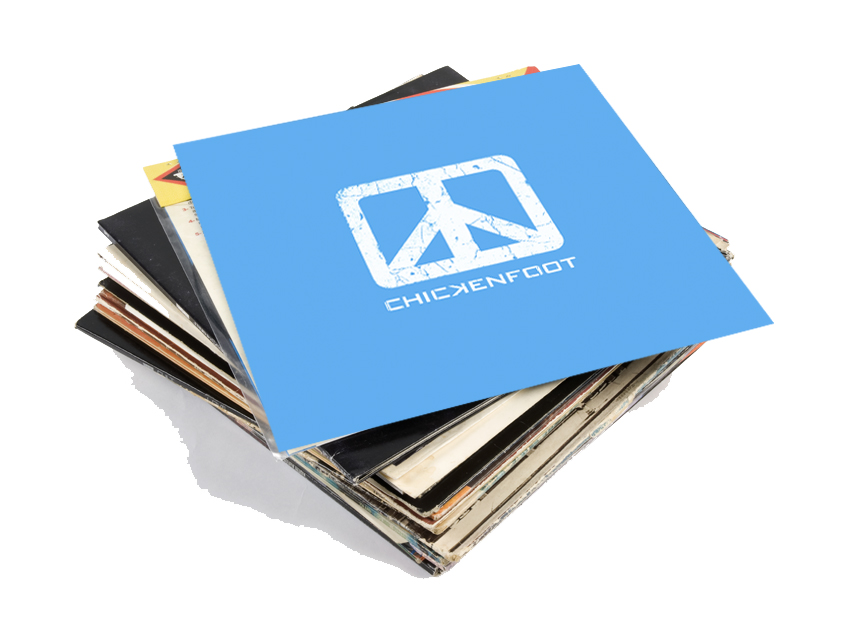
Chickenfoot III full album preview
On Chickenfoot's long-awaited second record, jokingly titled Chickenfoot III, the supergroup of Sammy Hagar, Joe Satriani, Michael Anthony and Chad Smith is every bit as super as they were on their 2009 debut. More importantly, however, they prove to be a band for the ages, rising to self-imposed challenges, creating music that is by turns poignant and humorous, introspective and carefree - and always supremely rocking.
In taking such a long-view approach, Joe Satriani tells MusicRadar that he strove for a classic band sound to suit the material. "The riffs had to be huge, and the guitars had to sound really big," he says, "but I wanted to make sure they were fully integrated into the rhythm section. One of my personal goals for the new album was that Chad, Mike and I would be sinews of a giant muscle."
During the initial stages of writing, Satriani issued a directive to Hagar: sing differently. “I had my reasons," the guitarist says. "It struck me that, whenever we would work together on songs, just the two of us, Sam would sing in a lower register. It was intimate, so full of soul. I thought, Wow, nobody has ever heard this quality in his voice before. He and I agreed that the new material would allow him to explore those other sides to his range."
At the same time, Hagar turned things around to Satch and told him that he wanted the guitar virtuoso to play his instrument in a new way. "He wasn't as specific as I was," says Satriani. "But we did agree to take our creativity somewhere else. For me, it was something of an open canvas. It was hard at times, but ultimately it was very rewarding."
When the band convened at Hagar's warehouse studio (affectionately dubbed 'the Foot Locker') earlier this year with veteran record-maker Mike Fraser serving as co-producer and engineer, Satriani had another idea in mind: more Michael Anthony. "For years he's been underplayed," says Satch. "The way that Mike plays the bass and writes his lines is so special. Not only that, but his singing, as everybody knows, is phenomenal. Presenting Mike Anthony to the fullest degree was an absolute must."
Recently, Satriani listened to the finished album on his own while taking a walk at home in San Francisco. Just as the last song ended, his cell phone rang. "It was Sam," says Satriani. "He was so excited. 'Have you heard the record? Do you love it as much as I do? It's great, isn't it?’ The fact that we were both listening to it at the same time was an incredible moment of synchronicity. To me, it means something big.”
Chickenfoot III will be released worldwide on 27 September. (A special 'Fan Pack,' containing a 132-page magazine, will be issued on the same day in the UK.) On the following pages, Joe Satriani walks us through the album track-by-track.

Last Temptation
“Something I tell people at guitar clinics is, ‘All techniques are equal.’ If you don’t know modes, you think they’re exotic and mysterious. But once you know them, you realize that they’re no different from any five-note scale. It’s all music.
“On Last Temptation, I didn’t shy away from just slamming down barre chords, because that’s what was needed. At the same time, I combined those chords with super-heavy licks that the whole band would play. I was thinking of ensemble playing with really pounding chords. Lots of exploding and contracting.
“We had a great time arranging this song on the spot. When we record, a lot of times we’ll play a song a few times, and everybody will throw ideas around – Mike or Chad will want to shorten a part or change something. This was a pretty fast coming together from the whole band. We played it live and put in a few overdubs – that was it. Very fresh, with everybody tearing in and going for it.”

Alright, Alright
“We started it on tour. We were backstage jamming before a show, and I started playing the opening guitar sequence. Chad and Mike joined in, and then Sam walked in and began singing, ‘Alright, alright, alright!’ We recorded what we had right there, and everybody looked at me and said, ‘Joe, you’re going to finish that, right?’
“When I was working on it later, I was trying to figure out a way to give it more guts. It’s a light kind of a chorus, so I wanted to bring it down and give it weight. I gave it a Stonesy sort of a verse and some funky key changes for the solo.
"We had a lot of fun recording it. It’s such a cool piece – everybody just came in and knew what to do. A great vibe.
“There’s some funny guitars on it. Besides the Ibanez JS guitars, there’s a ’58 Esquire on the left channel and a ’59 Gibson ES-335 on the right. The JS2400 was my main tracking guitar, and for the solo section that’s one of the JS prototypes with three DiMarzio Choppers. I used it on quite a few songs.
"That prototype has one of the punchiest Strat sounds I’ve ever heard. It gave the solo on Alright, Alright a vintage quality. Sam calls it the ‘Sunshine Of Your Love guitar solo.’”

Different Devil
“The guys really loved my basic demo for the song and wanted to record it. It sounded very commercial, so of course, I wanted to try to make it a little more artsy – Sam is always kidding me about trying to be a cult artist. It was so funny: the guys were all excited about its accessibility, and meanwhile I’m bumming the whole day.
“We ended the session, and Chad asked me if he could take one of the guitars to his hotel. He took one of the JSA acoustics and came back the next day and said, ‘I wrote another part for the song, and I think it can work.’
“We stuck Chad’s part in, and it really did sound right for where the song was now headed. It also triggered something in Sam for his vocals - he found something he could sing. We then took my idea for the chorus and moved it to the end.
“Later on, when Sam was singing the chorus, it seemed as if his melody was over another chord progression - I don't know why, though. I found the part in the musical performance that had the chords, cut and pasted them, and it worked out. Then Mike and Chad decided they wanted to do their parts over again. A lot of effort went into this one.
“When Sam and Mike did their vocals – wow, pretty intense! A classic sound. I have to admit, the guys were right about this song: it is pretty cool to listen to.”

Up Next
“The song starts innocently, tied to where I wanted to see the record headed – very riff-heavy and bluesy, with lots of open spaces where Sam could tell a story. Of course, I had no idea what the story might be – that would come later.
“Chad and Mike really took the riff and propelled it. This is another song where the chorus is just barre chords, and I thought somebody might say to me, ‘Hey Joe, isn’t that a little simple?’ You know – ‘Where’s that fancy stuff you do on your solo records?’ But again, it’s what worked.
“For the solo, though, I went the other way, from the Ramones and White Stripes to something totally crazy, which somehow fit the mood of the song. On the whole album, I used the prototype for my signature JVM410 Marshall amp. All we had to do was change channels and modes on the amp, and we got everything we wanted.
“Lyrically, Up Next took on a lot of weight following the death of one of our managers, Carter. He was sick during the making of the album and died before we finished. Sammy wanted to sing about Carter, and it’s a true testament to his abilities as a communicator that he could deliver such a message without going over the top.”

Lighten Up
“Sam gave me a 15-second recording of him playing three chords and being angry – he was in an intense mood when he did it. There wasn’t a lot to go on, a song written around A, G and E, but there was something about his attitude that was very unique. Basically, I wrote the song around that.
“The track was so much fun to record as a trio, with me, Mike and Chad. We had a blast. When I went to lay down overdubs, however, it was hard to tell where the key signature was in the verses. It was very strange. I had a hard time finding my footing. I was like, ‘I’m not into this.’
“The next day, Mike Fraser must have been reading my mind, that it was bugging me, because he suggested we try again. We ended up replacing the live guitar all the way through. Then I did overdubs, and everything just clicked – it sounded fantastic.
“I thought to myself, Wow! Sam has pushed my guitar into a more in-your-face, don’t-be-afraid-to-rock-out area. As much as I wanted Sam to change things as a singer – to be lower register and tell more stories – he wanted me to let go as a guitarist. I really did that on Lighten Up.”
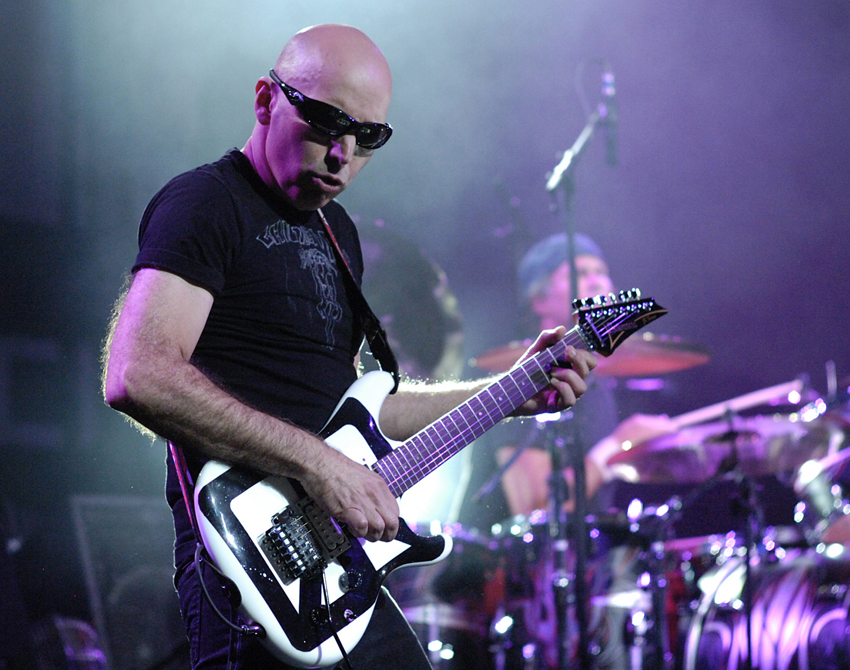
Come Closer
“Sam gave me two sheets of lyrics and said, ‘Can you write something to this?’ It was interesting - usually, the music comes first. He didn’t say a word to me about the style or anything. I looked at the lyrics and thought they were very unique.
“I woke up one morning, went to my piano and started playing. Initially, the music was a bit more Radiohead than R&B, partly because I don’t play the piano too well. [laughs] I took out my phone, made a quick recording and e-mailed it to everybody.
“Sam came to the studio all excited to record it – he loved what I had demoed. After the other guys arrived, we spent a lot of time trying to figure out how to make it a guitar song. Again, the answer didn’t come to me at first. I didn’t want the track to be a power ballad, but going too bluesy didn’t seem right, either.
“We started playing, and once we heard Sam sing in that R&B/soul timing of his, we felt comfortable going more minimal – we didn’t have to slam it. During the solo I stepped on my POG pedal and played these arpeggios, and everything felt right about the song to me.
“You have these little struggles sometimes; you have to wrestle with the material. In the end, Come Closer turned out really sweet. I’m so happy that Sam liked what I wrote to his lyrics.”
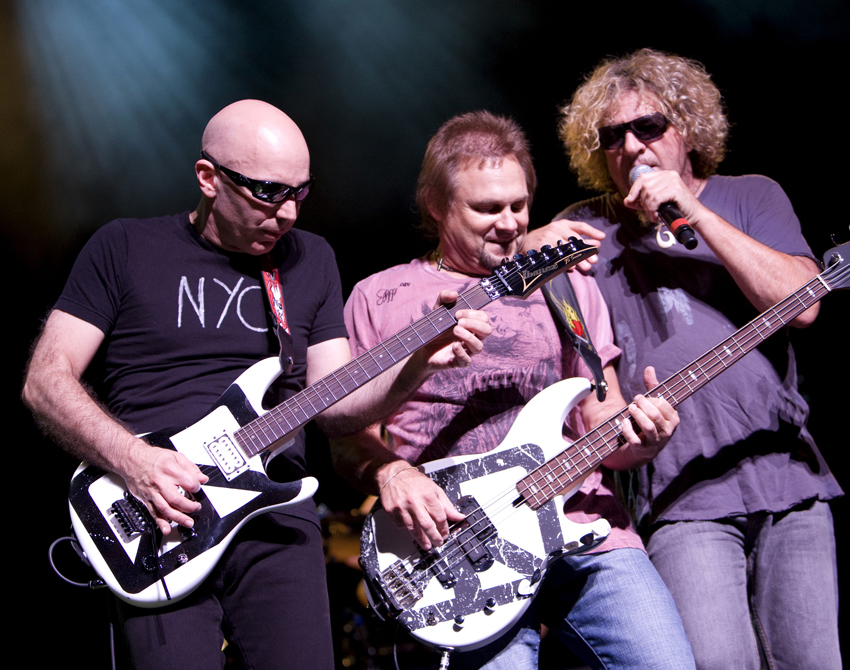
Three And A Half Letters
“Carter had been asking Sam to write a topical song about the economic situation. ‘I need a job’ was the line that was being used. At the same time, Sam started going through letters that he had received from fans, and a lot of them were pretty desperate. He got the idea to put it all together.
“He called me and said that in the verses he was going to read some of the letters, and in the choruses he was going to scream ‘I need a job!’ The plan was that at the end of each chorus I would just go nuts on guitar. Sam didn’t want me to sketch out or demo what I would do. Total, gut-reaction spontaneity was what he had in mind.
“I did write out the main framework for the song, though. The band got together on the last day of recording, and we went for it live in one take – raw, unchecked emotions. For the solo sections, I stepped on the Proctavia and went crazy. We added a second guitar for the chorus chords and moved the live solo guitar to the center and added delays hard left and right.
“Sam’s vocal performance is so heartfelt and real. The last verse is quite dramatic. I have to admit to getting choked up when I hear this song.”
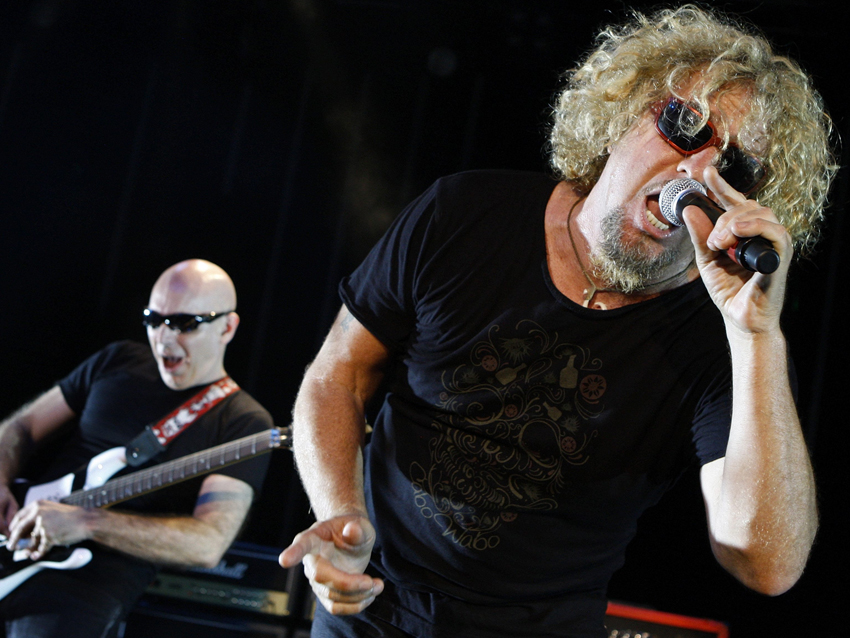
Big Foot
“I was writing for the rhythm section, something where we could come together and create a force that was bigger than the three of us. I wanted it to be huge, just totally overwhelming.
“I called the song ‘Big Foot,’ just figuring that Sam would come up with another title. He ended up loving the name and wound up using it for the whole story. He sang quite a lot of it while we were tracking. I love recording like that.
“In my other career, I spend a lot of the time playing melodies and solos. In Chickenfoot, I get to play a lot on the low strings of my guitar, which I do enjoy. Being real deep in the pocket is so cool, and it’s really great when you can find that place with Mike and Chad.
“On Big Foot, it’s hard to tell the difference between the JS2400 and a Jimmy Page Les Paul. I wanted to get the guitars to sound close to each other, but there’s a slight change in their tones, however subtle. There’s a Rickenbacker 12-string in there, too – a little fairy dust.”

Dubai Blues
“On my demo, this song was like rock meets hip-hop. The rhythm figures during the bridge section were spooky, these harmonized notes played me scraping the pick on the string down by the bridge. This was set to an old Linn Drum loop, so it was very controlled, stream-of-consciousness guitars set to this old-school, rock/hip-hop rhythm.
“The guys were trying to figure out how to play it, so they basically decided not to. [laughs] They went at it like it AC/DC, Aerosmith, Chickenfoot, whatever. As we were tracking, I realized that I couldn’t play the spooky parts anymore – I had to make them more bluesy.
“Lyrically, Sammy went for a story told in blues folklore, about a guy complaining that he’s got everything in the world except for the girl he loves. There’s a lot of songs that have been based around the same tale, but Sam did it in a way that tips the hat to blues roots.
“The ensemble end is great because you get to hear a bunch of guitars playing rhythmically while the rest of the band is really cooking. It’s a terrific moment.”
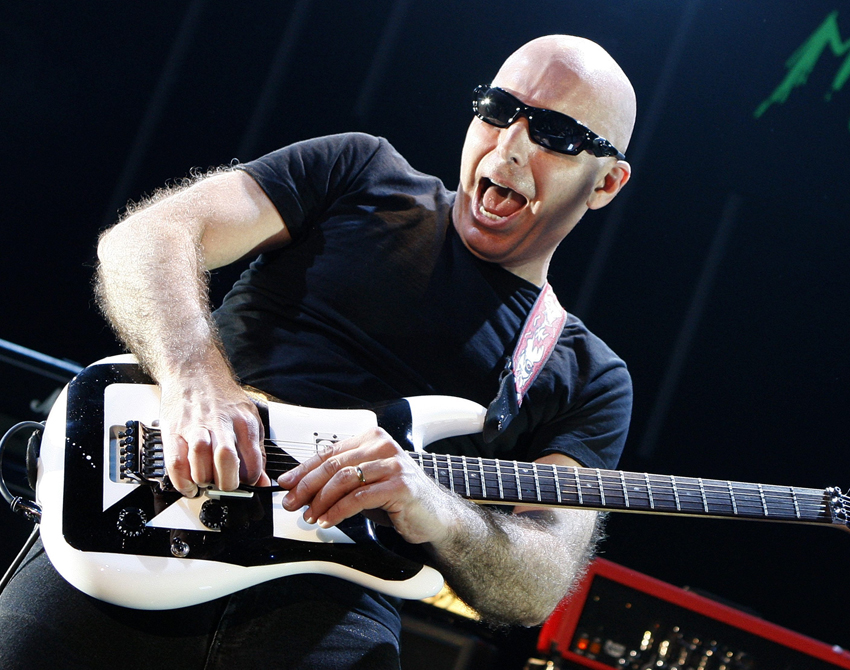
Something Going Wrong
“This was one of the last demos I did, and it was just an acoustic guitar and a vocal melody. It was pretty moody and dark, and I didn’t know if the guys would want to do it, but they did. I was so happy.
“Of course, whenever Chickenfoot wants to do something, they want to do it right now. I hadn’t prepared what guitars I was going to use or anything like that. It’s different for guitarists: we have to figure out guitar and amp combinations, decide how to layer parts - all of those things.
“Right before we went in to track, I said, ‘I think I should play a 12-string.’ I had a prototype of a JSA 12-string, but the pickup wasn’t working. I asked Sam if he had anything, and we found this old Ovation 12-string in storage. The strings must have been from 1978 – it was completely dead.
“My guitar tech, Mike Manning, got it tuned up. We plugged it in, miked it up, and there I was, playing the song. I nailed the part on the second take. When I listen back to the track, I think, This is the way you’re supposed to record. This is as honest as it gets.
“For overdubs, I put in a banjo, a JSA six-string, and for the solo I used one of the prototypes of the JS. Mike Fraser then asked me to play guitar all through the song, so I used the ’59 335 – it was the right last ingredient. I think we took a huge leap forward in Chickenfoot music when this song was finished.”

Joe is a freelance journalist who has, over the past few decades, interviewed hundreds of guitarists for Guitar World, Guitar Player, MusicRadar and Classic Rock. He is also a former editor of Guitar World, contributing writer for Guitar Aficionado and VP of A&R for Island Records. He’s an enthusiastic guitarist, but he’s nowhere near the likes of the people he interviews. Surprisingly, his skills are more suited to the drums. If you need a drummer for your Beatles tribute band, look him up.
"At first the tension was unbelievable. Johnny was really cold, Dee Dee was OK but Joey was a sweetheart": The story of the Ramones' recording of Baby I Love You
"Reggae is more freeform than the blues. But more important, reggae is for everyone": Bob Marley and the Wailers' Catch a Fire, track-by-track
"At first the tension was unbelievable. Johnny was really cold, Dee Dee was OK but Joey was a sweetheart": The story of the Ramones' recording of Baby I Love You
"Reggae is more freeform than the blues. But more important, reggae is for everyone": Bob Marley and the Wailers' Catch a Fire, track-by-track









